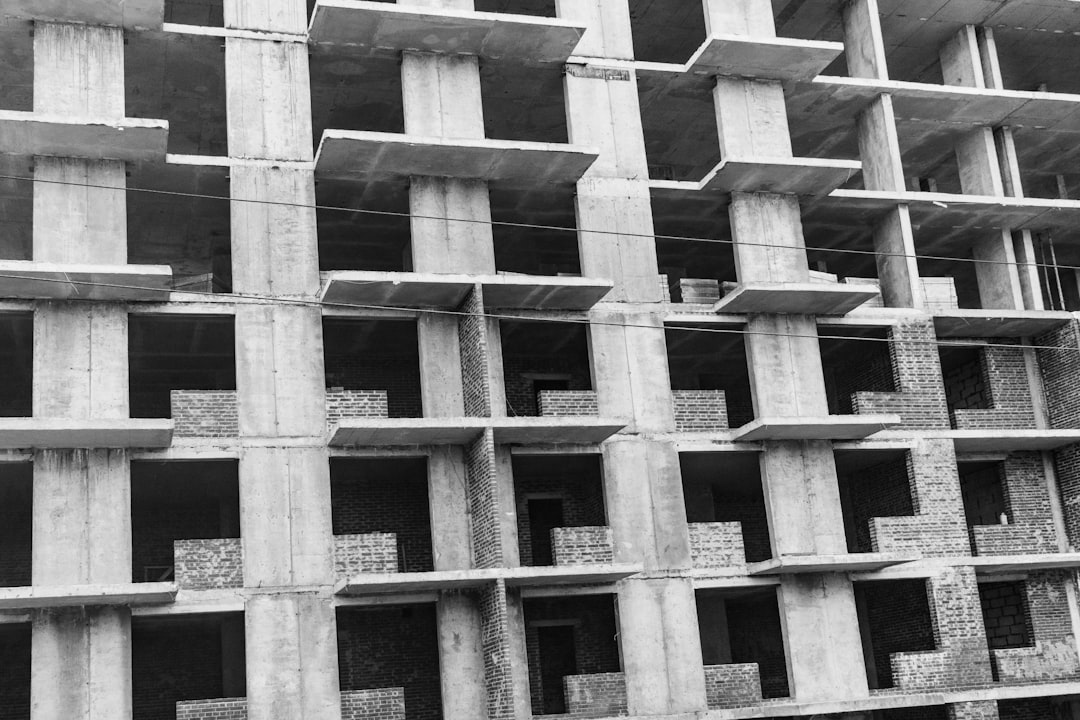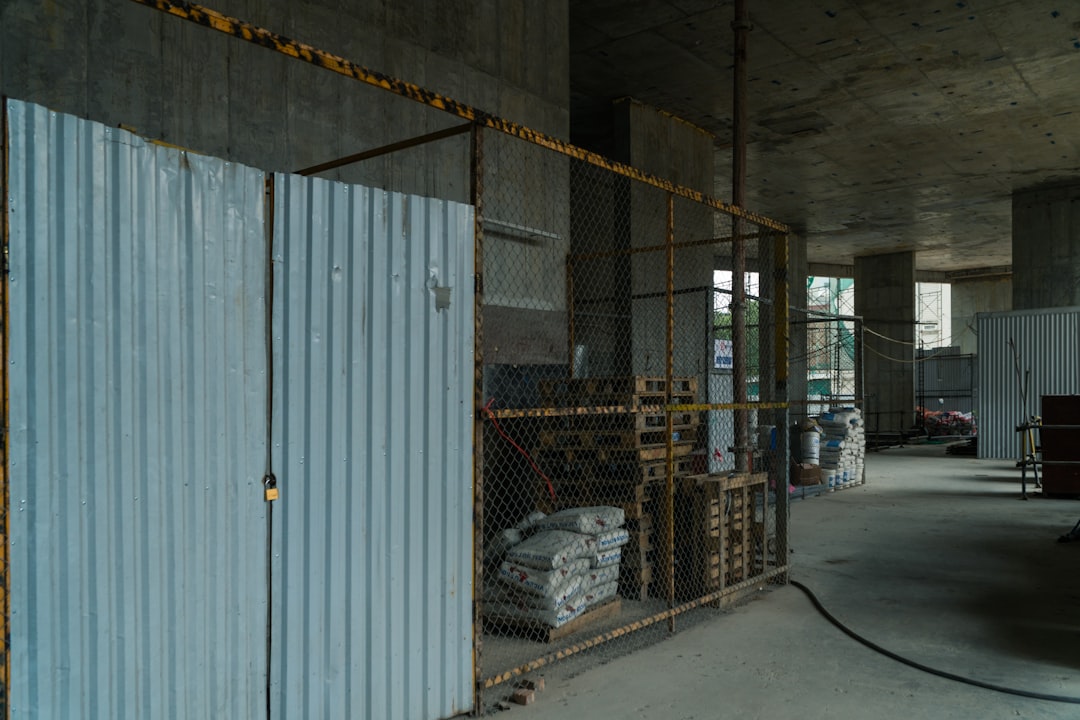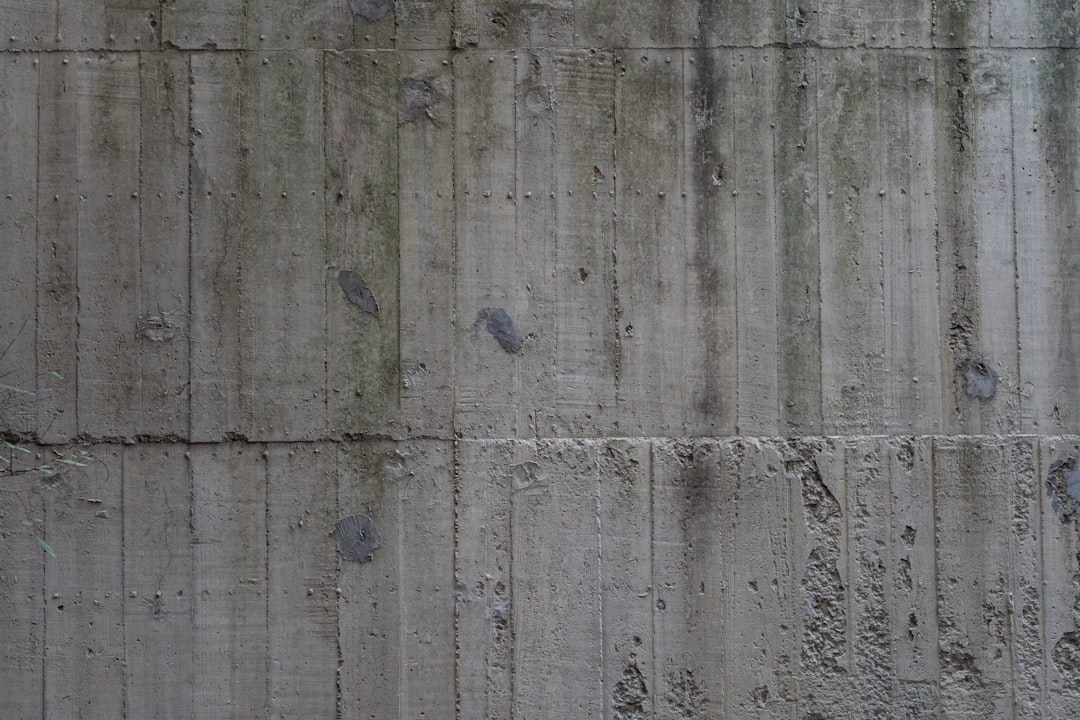

Engage prospects with a scan and streamline customer engagement with FREE QR code marketing tools by Sona – no strings attached!
Create a Free QR CodeFree consultation

No commitment

Engage prospects with a scan and streamline customer engagement with FREE QR code marketing tools by Sona – no strings attached!
Create a Free QR CodeFree consultation

No commitment
QR codes have quickly evolved into a strategic tool for decorative concrete contractors, offering a seamless connection between offline materials and online engagement. These dynamic assets enable contractors to generate quality leads, streamline appointment setting, and display unique design solutions to interested prospects, all without requiring app downloads or technical barriers. When scanners can go directly from a sign or brochure to a booking page or gallery, interest turns into measurable action.
Decorative concrete contractors commonly encounter obstacles with traditional paper brochures and signage. These materials often fail to capture the contact information of interested prospects who admire the work but stop short of making contact, leaving high-quality leads untouched and making it difficult to evaluate which assets deliver real results. QR codes turn static touchpoints into interactive gateways, capturing intent and creating new ways to nurture interest quickly. Consider upgrading brochures so every print piece leads to a measurable next step.
By smartly integrating QR codes into job site signs, showroom displays, and other marketing assets, contractors transform every surface into an interactive lead-generation channel. This approach surfaces intent signals that were previously lost, allows for prompt nurturing, and provides data-driven insight into exactly how buyers progress from interest to action. With the right setup, QR code campaigns reduce friction, improve attribution, and turn local visibility into a repeatable pipeline of consultations and closed jobs.

QR codes bridge the gap between physical touchpoints and digital outcomes, making it easier to achieve essential goals like capturing project inquiries, scheduling consultations, and inspiring homeowners with fresh concrete design ideas. They replace guesswork with measurable interactions so you can see what is working, where, and for whom.
In decorative concrete contracting, common challenges include lost project inquiries from high-fit prospects interacting with offline marketing but leaving no trace in your CRM. Often, those who see your yard signage or admire a stamped patio as they walk by are interested but do not submit a form, resulting in a disconnect between marketing effort and measurable leads. QR codes embedded in those touchpoints direct people to the next logical step and capture contact data automatically.
Contractors can modernize analog processes in simple, high-impact ways. Printed brochures become dynamic experiences when a QR guides prospects to a full gallery filtered by style or surface. Manual sign-up sheets at home shows give way to scan-to-enter drawings that instantly sync to your CRM—perfect for giveaways. Paper quote forms transform into mobile-friendly instant estimate requests that pre-fill fields and validate inputs so more inquiries are complete and actionable.
This approach modernizes lead capture, reduces missed opportunities, and supports the customer journey from the first scan to conversion. With a platform like Sona QR, you can manage codes centrally, update destinations without reprinting, and sync all engagement data to your CRM for faster follow-up and better attribution.

Field marketing remains crucial for decorative concrete contractors, yet assets like yard signs, event booths, and direct mail often leave prospect engagement untracked, resulting in missed leads and unclear ROI. Even when people are highly interested, they rarely type URLs or keep brochures long enough to revisit your website later. QR codes give them a one-scan path to action and provide visibility into that engagement—see creative examples of QR code marketing for inspiration.
The result is a tighter, more accountable funnel. Every printed asset becomes a digital entry point, and every scan becomes a data point you can use to improve messaging, placement, and offers. Instead of guessing which neighborhoods or events produce results, you can measure it directly with offline attribution.
QR codes empower decorative concrete contractors to generate and track more leads, enabling faster and more effective marketing. When paired with a system like Sona QR, your team gains dashboards, segmentation, and integrations that stitch offline activity into your broader performance marketing strategy.

QR codes in decorative concrete offer flexible solutions to address pain points such as incomplete data collection and missed upsell moments. The best results come from matching the code format to the task and the environment where it will be scanned. Job sites, for example, tend to drive gallery views and quote requests, while showrooms are ideal for scheduling and design tools.
Contractors should prioritize formats that reduce typing and enable one-tap outcomes. Dynamic QR codes are particularly valuable because they can be edited without reprinting and can capture analytics like location, time, and device type.
With Sona QR, you can create any of these formats, update destinations as campaigns evolve, and manage scans, tags, and audiences in one place. For most decorative concrete use cases, dynamic web links and forms deliver the highest impact because they gather data and drive immediate next steps.

In decorative concrete, much of the buying journey is sparked by exposure to finished work or local marketing. Neighbors notice a newly resurfaced driveway or stamped path and get curious, but without an easy way to act, that curiosity fades. QR codes give you a way to capture that moment of interest and turn it into a measured lead.
Prioritize placements where attention is high and context is strong. A code on a truck wrap seen in traffic needs a short, memorable call to action and a large size; a code in a showroom can be smaller and point to richer content like a full lookbook or material guide. Match message and destination to the environment and distance from the scanner.
When done right, QR codes close the loop from awareness to conversion, turning every asset into a measurable growth lever. You will not only increase leads but also learn which placements and messages resonate so you can scale what works.

Lost engagement and slow follow-up often block new business and upsell opportunities. QR code strategies address these gaps by surfacing prospects who are ready to act and by reducing the friction between interest and inquiry. Align each use case with a clear outcome and a mobile-first destination page.
Consider standardizing three to five core QR use cases across your marketing so they are easy to deploy, update, and track. Once your team is comfortable and the performance baselines are established, add more specialized codes for seasonal or partner campaigns.
Each use case equips contractors with earlier prospect identification, stronger engagement, and improved conversions. In many markets, contractors see 20 to 40 percent higher form completion when QR flows are mobile-optimized compared to manual entry or desktop-only pages.
Contractors often struggle with fragmented, anonymous data, where interested prospects never enter the system. Smart QR deployment turns every scan into a signal, including what content was requested, where the scan occurred, and which service the prospect explored. This becomes the foundation for retargeting and personalized follow-up that shortens the sales cycle.
By deploying multiple QR codes across touchpoints, you can segment audiences automatically. A neighbor who scans a yard sign for a stamped patio gallery should get different follow-up than a property manager who scans a showroom code for epoxy flooring specs. This granularity helps your team send the right message at the right time, which increases response rates and reduces wasted effort.
With Sona QR, each QR code becomes a smart entry point into your funnel. You can tag codes by service line, placement, and campaign, then automatically build custom audiences based on real behavior instead of assumptions. For decorative concrete, helpful audience distinctions include homeowners versus property managers, residential versus commercial, and new installs versus resurfacing.
QR codes are more than convenient links. They act as connectors across your offline and digital campaigns, enabling real-time engagement and richer data collection across every channel. When your printed materials and in-person touchpoints become trackable, your entire marketing strategy gets more accountable and easier to optimize.
For decorative concrete contractors, QR codes complement local SEO, social proof, and community presence. They also reduce dependency on a single channel by giving you a measurable path from traditional advertising to digital conversions. The key is to standardize your creative and your destinations so that scans feel consistent and reliable across media.
QR codes serve as the offline onramp to your digital marketing engine. With a centralized platform like Sona QR, you can manage all your codes, monitor performance in one dashboard, and sync scan data with your CRM and ad platforms so your multi-channel programs run on unified insights.
A structured approach helps you move quickly from idea to results. The following checklist walks you through scoping your campaign, selecting the right code type, designing for visibility, deploying across high-impact touchpoints, and optimizing with data-backed decisions.
Treat this as a repeatable playbook. Run it for a single service line first, prove impact, then expand to additional placements and audiences. Over time, you will build a library of high-performing assets and a clean dataset for attribution.
Clarify what you want to accomplish and where the scans will happen. Decorative concrete contractors often start with job site signs to drive gallery views and quote requests in nearby neighborhoods. Others begin with showroom displays to convert warm visitors into scheduled consultations on the spot.
Choose between static and dynamic QR codes based on your need for tracking and flexibility. Static codes are useful for unchanging assets such as a PDF lookbook. Dynamic codes are better for campaigns that need editing and analytics.
Great QR performance starts with clarity and scannability. Design for the environment where the code lives and the distance from which it will be scanned. Pair the code with a strong call to action that sets expectations.
Roll out codes where they will be seen most and where context is strongest. Sequence deployment so you can isolate performance by placement and message before scaling widely.
Treat QR campaigns like digital ads, with clear targets and routine optimization. Performance improves when you test and adjust creative, copy, and destinations based on data.
Decorative concrete marketing often suffers from poor attribution, making it hard to connect spend to results. Advanced tracking gives you clear visibility from scan to conversion so you can identify the assets and messages that produce real pipeline and revenue. This is essential when you are investing in signage, fleet graphics, print buys, and event booths that typically lack built-in analytics.
Instead of measuring only raw scan counts, instrument your funnel to capture meaningful milestones. For example, track the percent of scans that start a form, complete a form, book a consultation, and result in a proposal or sale. When you correlate these metrics with placement and creative, you can focus spend on what reliably produces quotes and closed jobs.
These insights close the loop, transforming guesswork into strategic, data-backed growth. With Sona—an AI-powered platform for identity, intent, and attribution—you can extend attribution further through identity resolution and multi-touch models that link QR scans with website visits, ad clicks, emails, and CRM stages for a complete view of the buying journey.
Fast follow-up and precise tracking are critical for sustained growth. Many contractors see immediate lift from QR codes, then expand impact by systematizing how codes are created, deployed, and measured. A small set of best practices can compound over time.
Lean into automation where possible. The faster you respond to a scan with a value-add message or a scheduling prompt, the more likely you are to secure the appointment before a competitor does. Build automation once, then reuse it across new codes and campaigns.
Start creating QR codes for free. Setup takes minutes, and the platform integrates with popular CRMs so scan activity can trigger workflows, lead scoring, and reporting with little manual effort.
Local visibility is critical in decorative concrete, yet standard marketing often underutilizes opportunities. QR codes unlock creative ways to capture and convert attention, especially when paired with compelling content and clear CTAs. The most effective examples meet prospects where they are and offer immediate value.
Borrow and adapt these ideas to your market, materials, and service mix. Start small, measure results, and repeat the ideas that consistently produce scans and bookings.
Each example demonstrates how QR integration maximizes every interaction, grows sales pipelines, and improves conversion. With consistent execution, these small touches create a compounding advantage across neighborhoods and partner networks.
Even simple QR programs benefit from thoughtful execution. Small design choices and operational habits have a big effect on scan rates and conversion. The goal is to remove friction at every step: from seeing the code to scanning, from landing page to action, and from action to follow-up.
Avoid common mistakes that erode performance. Codes placed too small or too low go unnoticed, and vague CTAs leave scanners unsure what they will get. Slow-loading landing pages and forms that are not optimized for mobile will undermine even the best placements and offers.
By following these recommendations, contractors build an efficient marketing engine that continually improves. The outcome is a tighter feedback loop between creative, placement, and revenue so your marketing becomes easier to manage and more profitable over time.
QR codes are more than a technology for decorative concrete contractors. They are a strategy for converting offline attention into measurable growth, turning every sign, brochure, truck, and booth into a digital entry point. When scans are tied to clear destinations, fast follow-up, and robust analytics, contractors capture more demand at the moment it appears.
Here is what you gain: faster engagement across every physical asset, a connected customer journey that moves people from awareness to action, and actionable data that transforms each scan into a signal for optimization. With Sona QR, you can create, manage, and track codes in one place and use Sona.com to attribute scans to pipeline and revenue. Start with a single use case, measure results, and scale the winners until QR codes become a quiet engine behind your growth.
QR codes have transformed decorative concrete contractors from relying solely on traditional marketing into leveraging dynamic, measurable growth tools. Whether it’s attracting new clients, enhancing customer engagement on-site, or showcasing your portfolio seamlessly, QR codes provide instant, mobile-friendly access to your services and capture real-time data to optimize every interaction.
Imagine knowing exactly which promotional materials or project showcases drive the most inquiries—and being able to update your campaigns instantly without costly reprints. With Sona QR, you can create dynamic, trackable QR codes in seconds, connect every scan directly to client leads, and fine-tune your marketing efforts for maximum impact. No missed opportunities, just smarter, more profitable growth.
Start for free with Sona QR today and turn every scan into a conversation, a consultation, or your next big project.
QR codes help decorative concrete contractors convert offline interest into measurable leads by linking physical marketing assets to digital destinations, capturing contact data, and providing analytics for better marketing decisions.
Contractors can place QR codes on job site signs, brochures, vehicle wraps, and showroom displays to direct prospects to project galleries, quote request forms, or booking pages, turning passive interest into tracked consultations and inquiries.
Dynamic QR codes that enable tracking, editing destinations without reprinting, and capturing analytics are most effective, especially when used for web links, forms, booking schedulers, and review collections.
QR codes record scan data like time, location, and source, which integrates with CRMs to link leads and revenue back to specific marketing assets, enabling data-driven budget allocation and campaign optimization.
Design codes with clear calls to action, size them appropriately for viewing distance, place them at eye level, limit one code per asset, test scan performance on multiple devices, and deploy across high-traffic, contextually relevant touchpoints.
By assigning unique QR codes based on service lines, funnel stage, and placement, contractors can collect intent data to segment prospects and trigger personalized follow-up campaigns through CRM and ad platforms.
Use cases include accessing project galleries, requesting instant quotes, activating promotions, exploring design inspiration tools, and encouraging post-project reviews and referrals.
Results can be seen quickly when campaigns are focused and optimized, with many contractors noting immediate lifts in lead volume and form completion once QR codes are deployed effectively.
Look for contractors who utilize QR codes to provide accessible portfolios, instant quotes, and easy booking options, which reflects their commitment to modern marketing, clear communication, and fast response.
Contractors can use QR codes to share before-and-after galleries, stamped patterns, color palettes, interactive style quizzes, and material guides that inspire homeowners and help tailor consultations.
Use Sona QR's trackable codes to improve customer acquisition and engagement today.
Create Your FREE Trackable QR Code in SecondsJoin results-focused teams combining Sona Platform automation with advanced Google Ads strategies to scale lead generation

Connect your existing CRM

Free Account Enrichment

No setup fees
No commitment required

Free consultation

Get a custom Google Ads roadmap for your business






Launch campaigns that generate qualified leads in 30 days or less.
